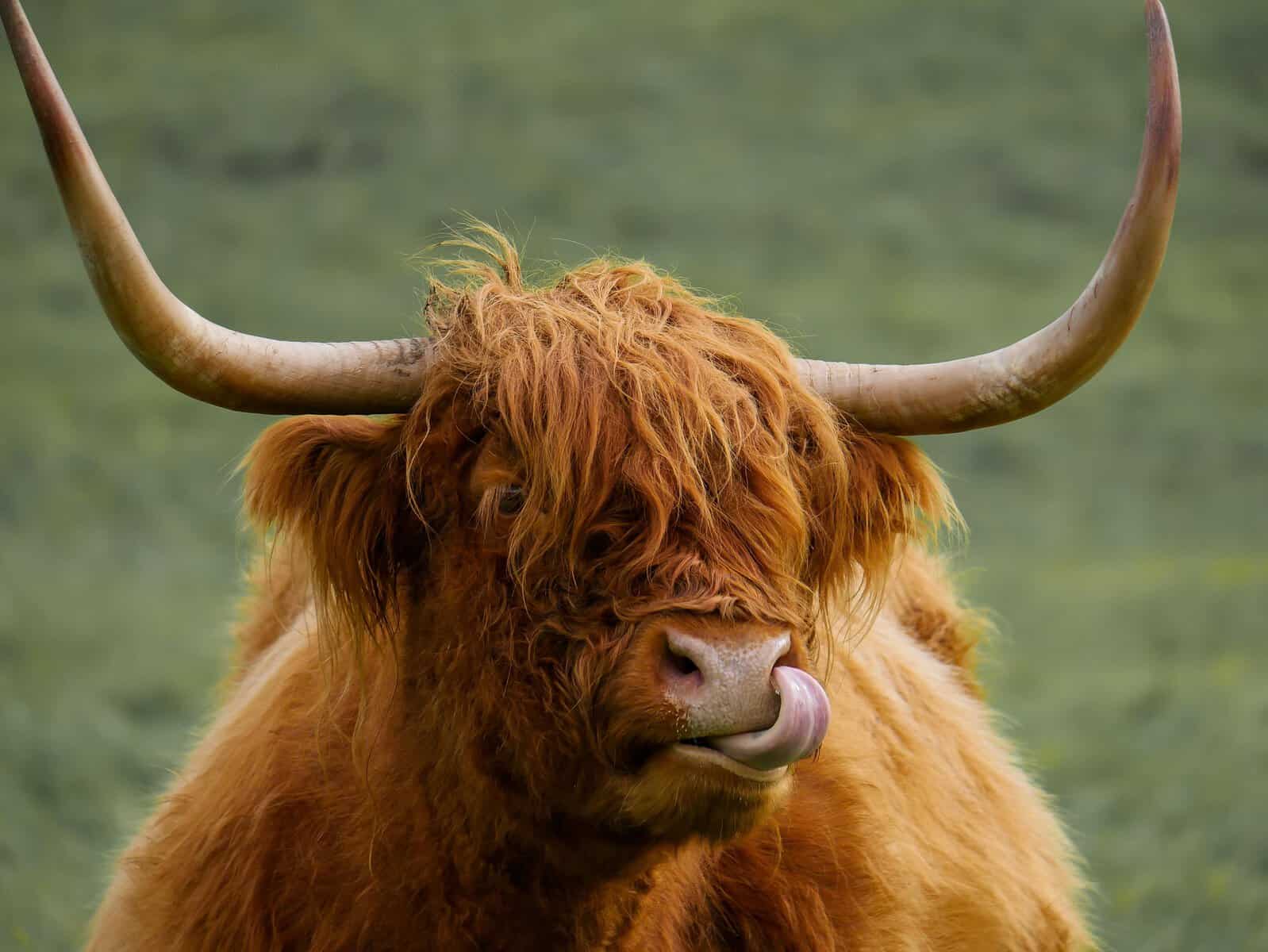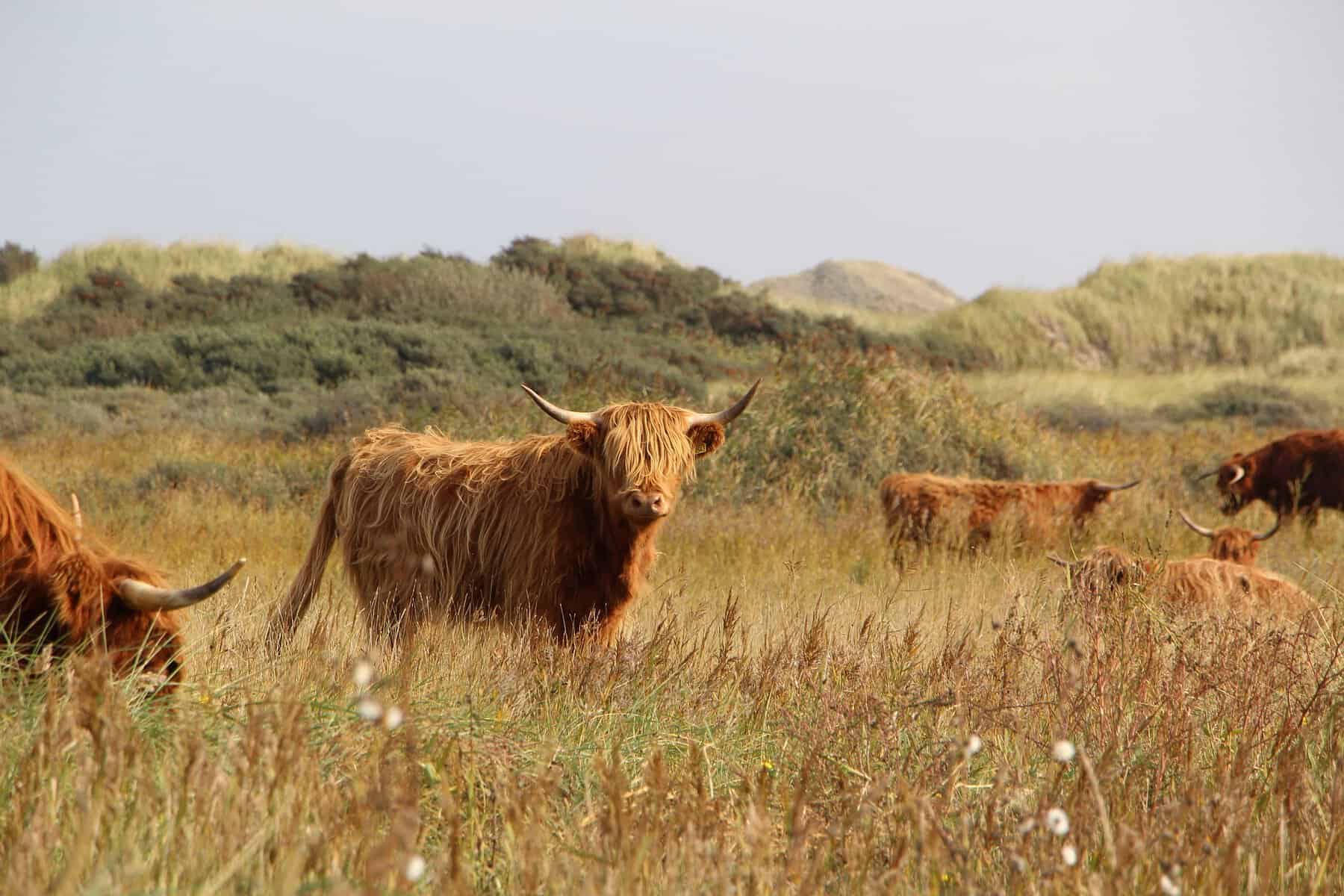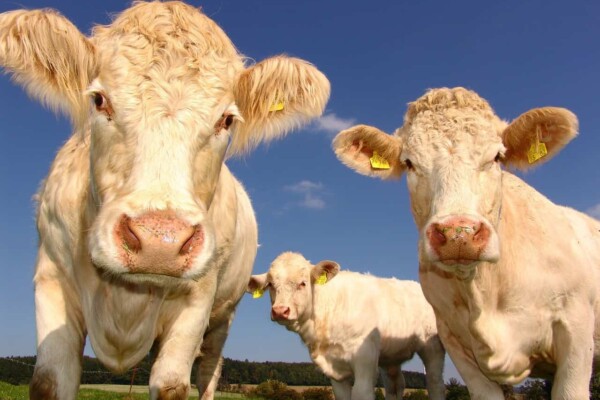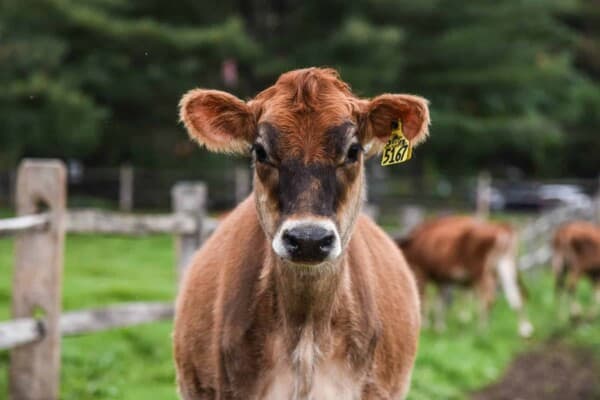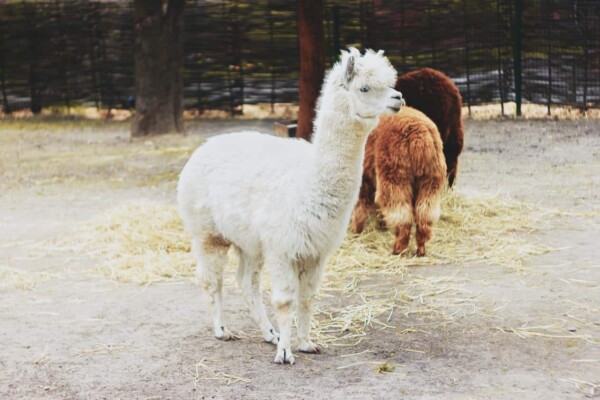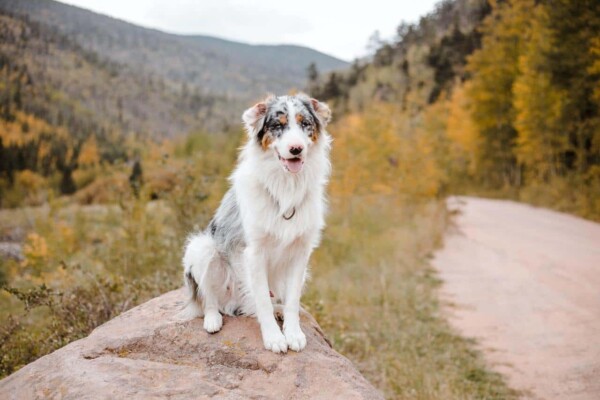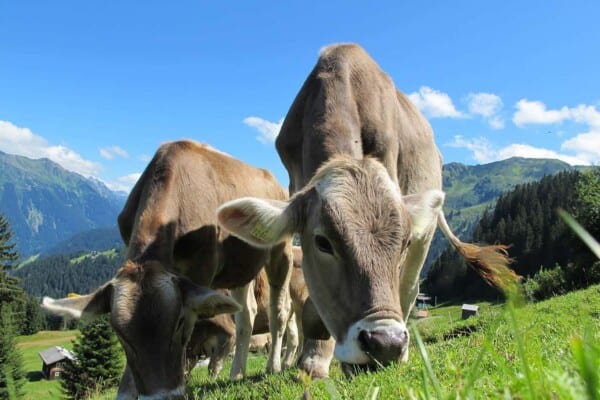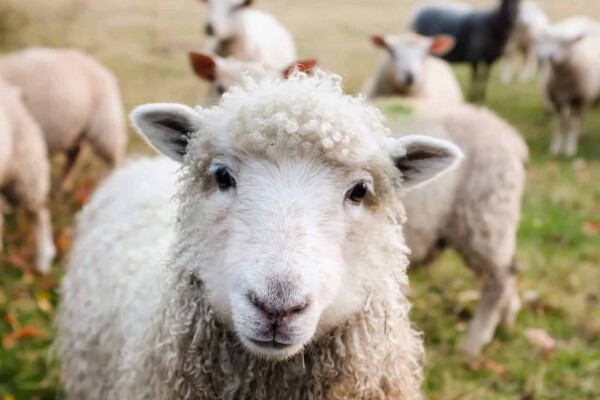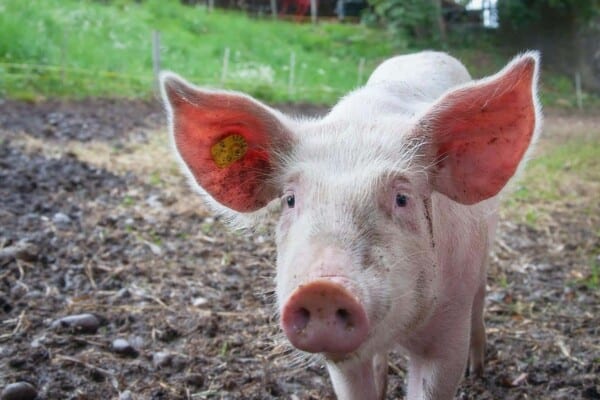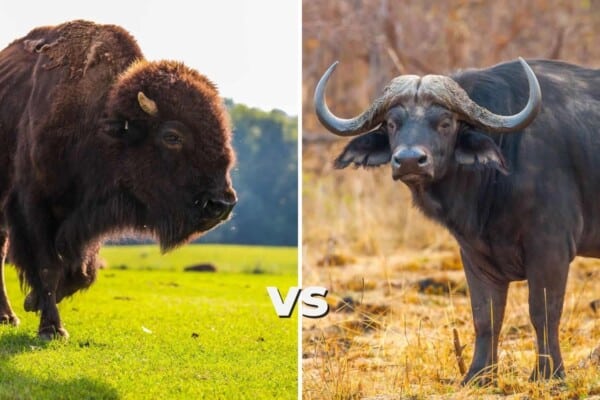Highland cows are often times referred to as the gentle giants of Scotland, and for good reason too.
These cows are known for their iconic long horns and flowing red locks, and yet very few people know what raising them is actually like.
So, in this article we decided to go over the breed’s profile and facts as we guide you through everything there is to know about Highland cows.
But before we get into the breed’s characteristics, how about we first dive into the rich history of the breed:
Highland Cows: History and Origins
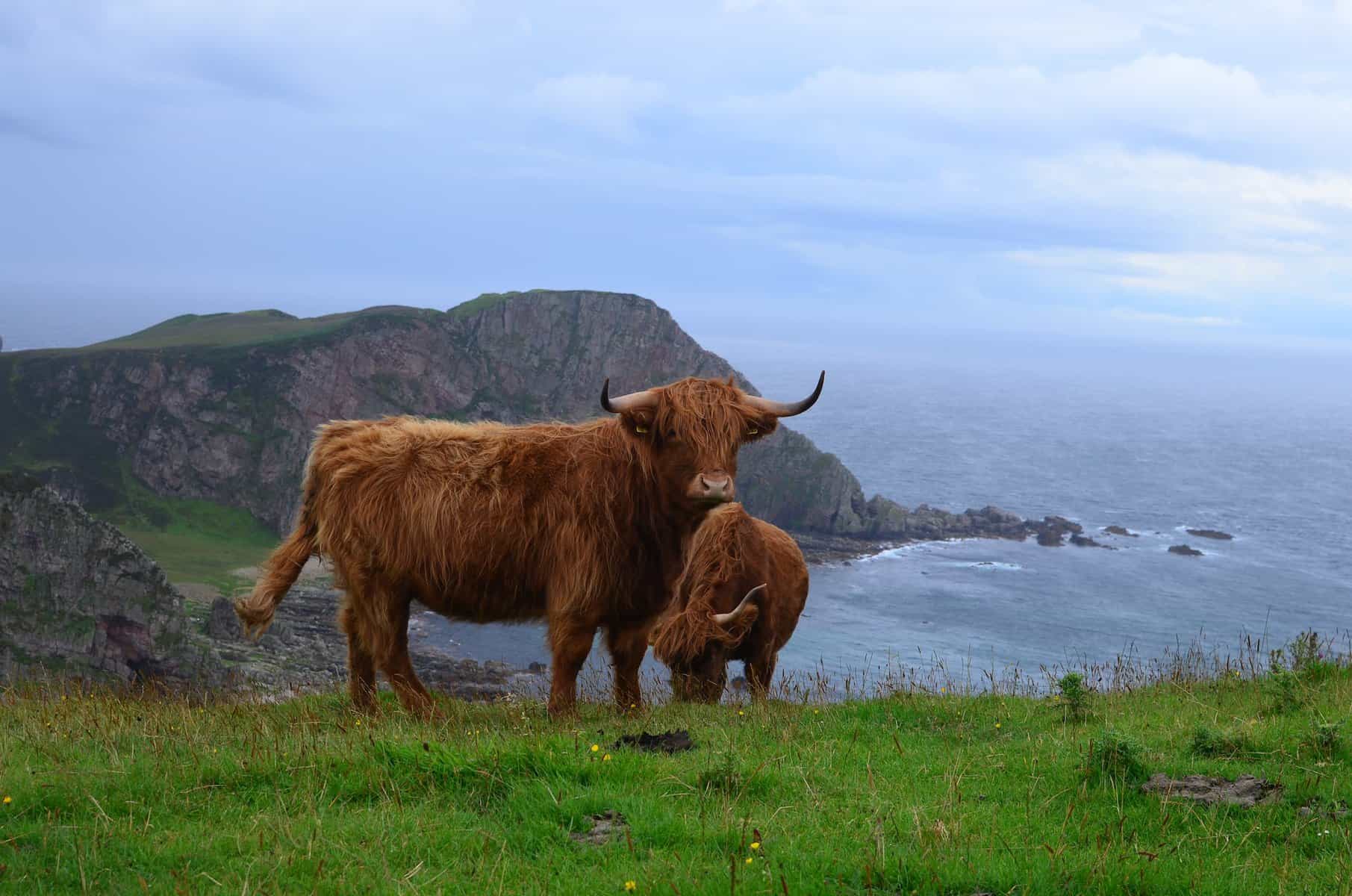
Everything started around the 18th century, when thousands upon thousands of Highland cows could be found in the forests and hills of Strathspey in the Scottish Highlands.
These cows were then relocated up to the high Corries. That’s where the herdsmen were forced to stay in temporary buildings that were known as shielings at the time.
From this moment on, the herdsmen had to raise the cattle little by little until they were fat enough to be slaughtered.
As soon as that time came, the cattle would be driven along the trackways that were known as the drove roads.
So, for the next couple of days, they would walk a few miles every day until they would eventually reach the marketplace. These markets were usually found in places such as Falkirk or Crieff.
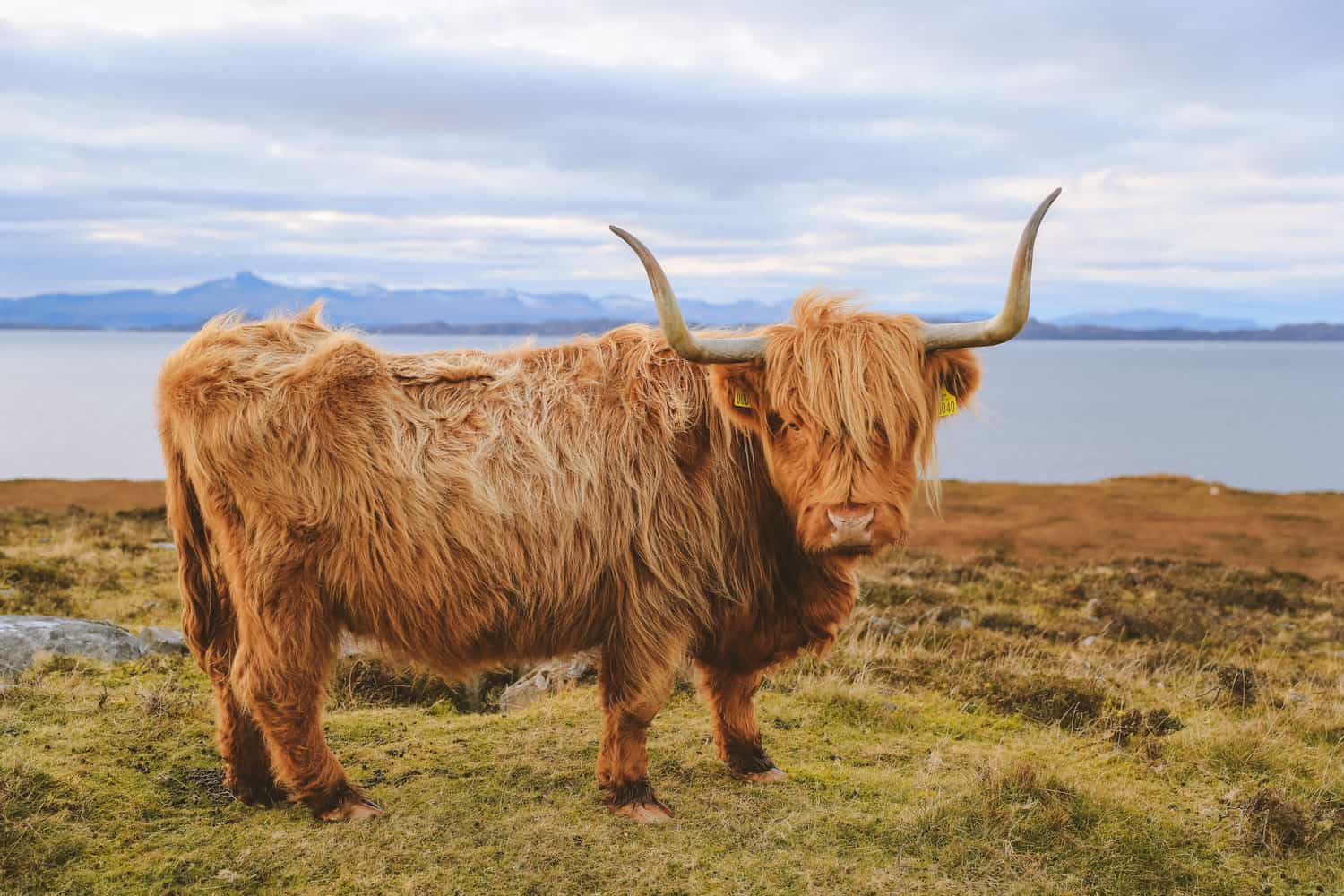
Buyers would travel hundreds of miles to eventually get to these markets because this is where the best deals were and most importantly this is where the limited produce could be found.
The market was actually run by the so-called high-quality ‘Scotch runts’. These were the original Highland cattle, and they were very popular back then.
In some cases, it is believed that sums as large as £30,000 would be paid for these Scotch runts, and while that may not sound like all that much money today, trust us when we tell you that back then it was an insane amount.
These cows were so popular that cattle thieving became one of the most common trades back in the day.
This is why farmers would pay a commission with the official Watch to have their cattle protected at all costs.
Highland Cattle Appearance and Characteristics
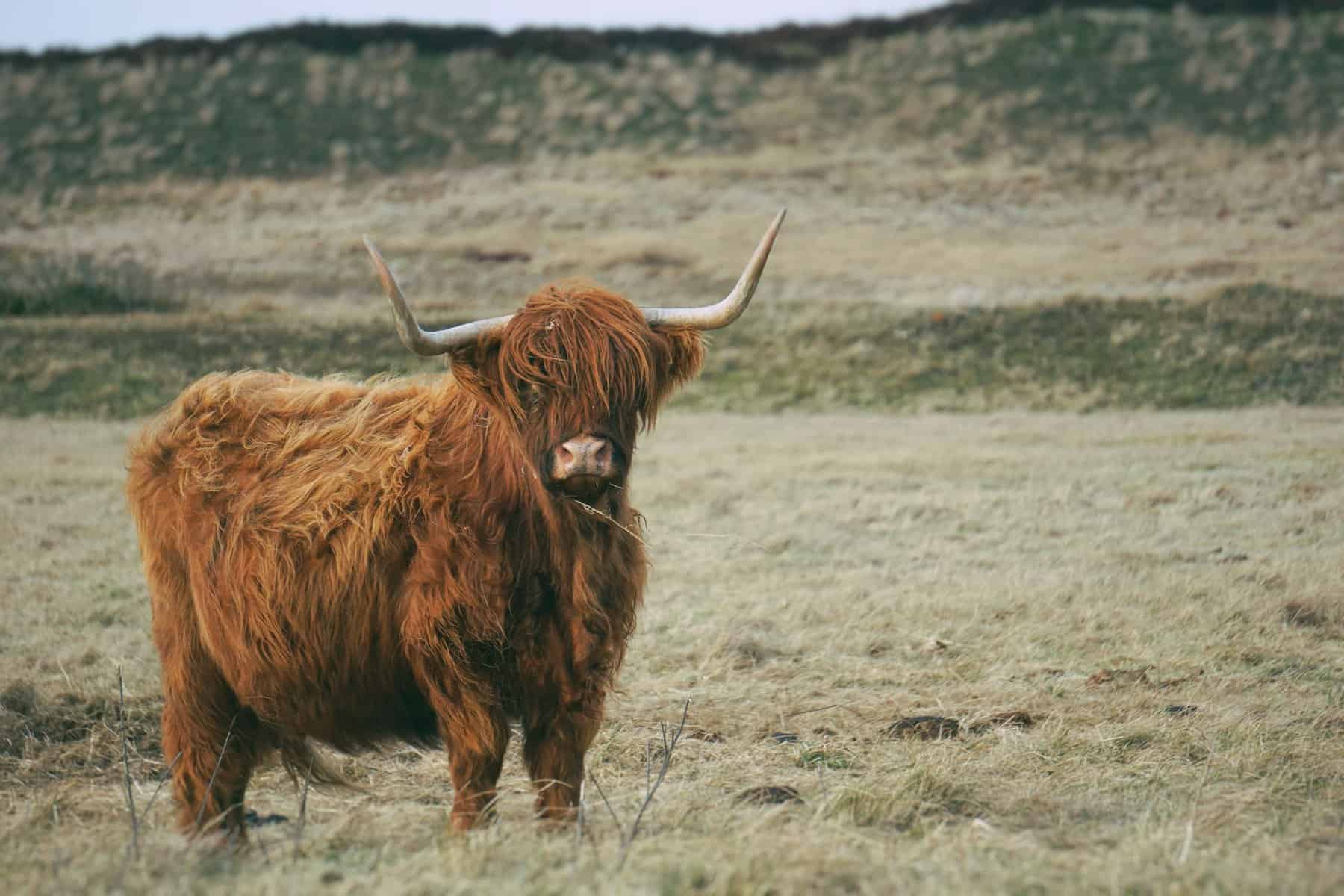
These are the main characteristics that Scottish Highland cattle are known for:
- They have very distinct horns
- Their coats are very long, woolly and full
- Their coats also extend over their eyes, shielding their faces and giving them an emo-like look
When it comes to their coat, these are the main color variations that you can expect to find on the market:
- Red
- Ginger
- Dun
- White
- Grey
- Silver
- Brindle
- Black
- Yellow
- Tan

Their main purpose is to be raised for their meat. As far as their beef is concerned, they are quite sought-after thanks to it being lower in cholesterol than most of the other alternatives on the market.
They are relatively hardy, which is a testament to their thick woolly fur coats.
These coats helped them survive in the harsh conditions of Scotland, and they are the longest of any cattle breed in the world.
The bulls can weigh up to 800kg or 1750lbs while the cows don’t usually get any heavier than 500kg or 1100lbs each.
Highland cows are also raised for their milk production. This milk is quite popular thanks to its high butterfat content.
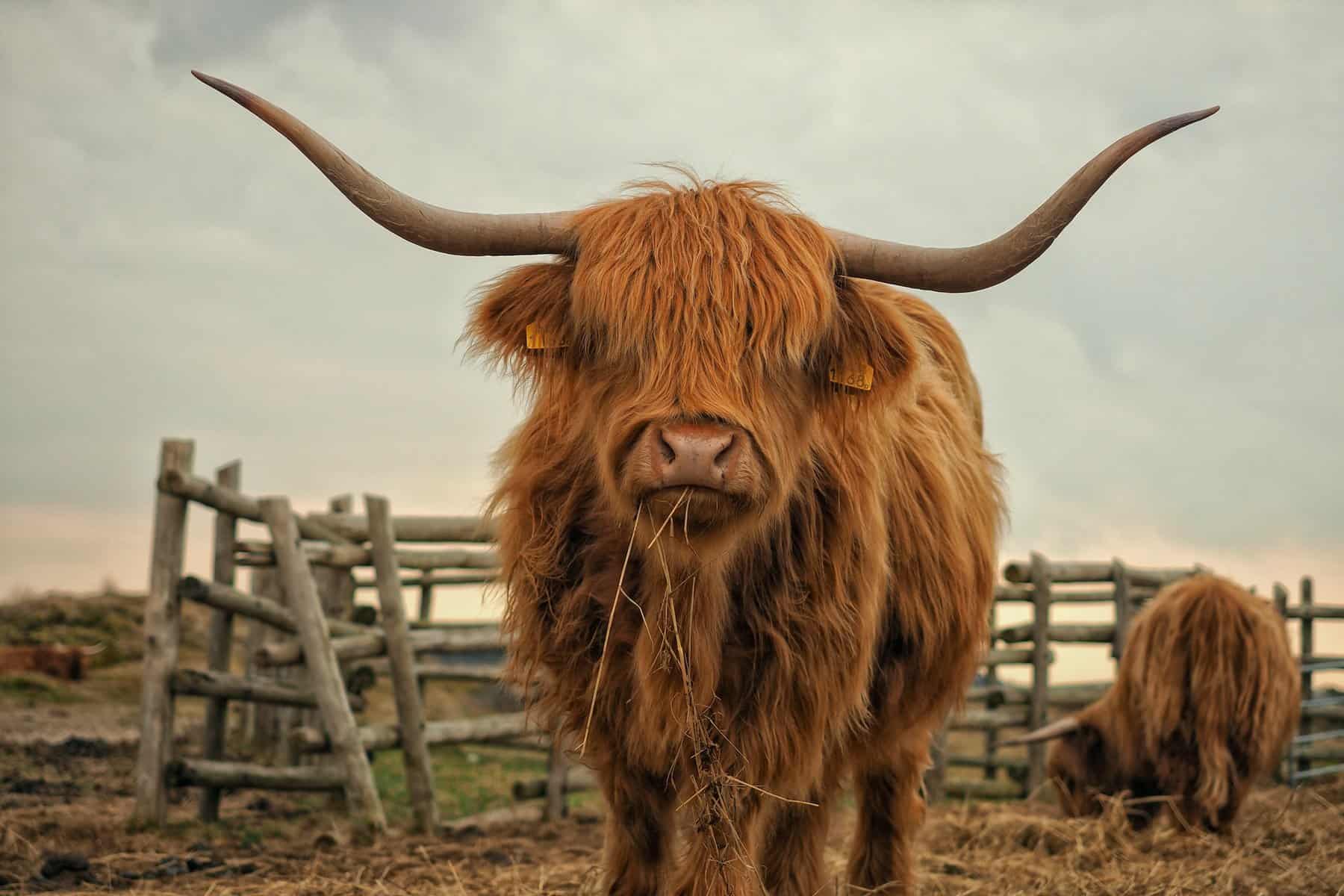
Their large coats are quite beneficial for their overall hardiness, as they accomplish the following:
- They protect them from the harshness of the winter
- They protect them from flies
- They offer protection from brushing against sharp objects
- They add to their general appeal
Another thing that you should know about the Highland cows is that their hair does tend to get shorter during the summer.
As such, they can also be raised around the Southern climates, although they are most popular in colder areas.
Another advantage that Highland cows have over other cow breeds is that their long hair does make it so that they don’t need to store the waste fat to survive the winter.
Thanks to this, they can be slaughtered around any season and you won’t have to worry about their meat holding an unnatural amount of fat in it.
What Are Highland Cows Raised For?
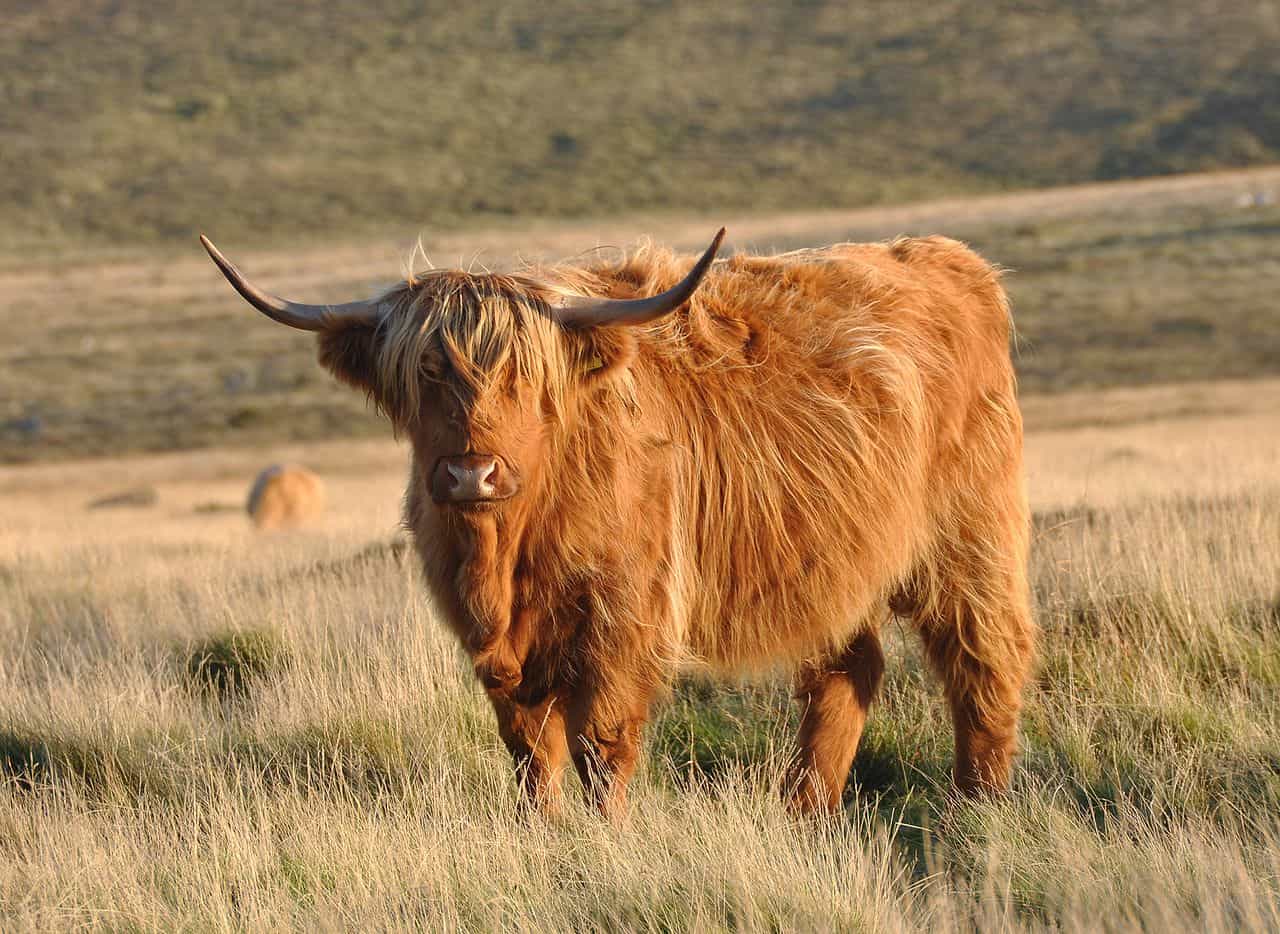
Highland cows are especially popular these days because they are dual-purpose animals. This means that farmers actively raise them both for their meat as well as for their milk production.
With that being said, here is what you need to know about either of these two:
Highland Cow Milk

While Highland cows are considered to be dual-purpose farm animals, that’s not to say that industrially speaking, they are on par with some of the other commercial breeds.
In fact, Highland cows are only really recommended as milk producers if you want a personal use cow.
If you are looking to make a decent earning off of their milk alone, you should already know by now that there are plenty of better options out there.
Still, you can expect to get around 2 gallons of milk per day, and on top of that, using Highland cows for their milk will also yearn you the following benefits:
- The milk has a very high percentage of butterfat content, almost 10% in some cases
- Because of this the milk has a very unique taste, and while it is not for everybody, if you prefer a fattier milk, the Highland cow’s milk will definitely be for you
- The Highland cows have much smaller teats which make them easier to clean but also slightly harder to milk
Highland Cattle Meat

This is why most farmers out there actually raise their Highland cows. That’s not to say that you can’t raise them for their milk production, just that they’re a lot more proficient when it comes to their meat quality.
With that being said, their meat has the following features that you should know about:
- It is well marbled
- It’s very lean
- It’s considered to be premium beef
- It fetches a very hefty price on the market
- It has a very fine texture
- It features a very succulent flavor
- The meat also has a very high protein content
All in all, the Highland cattle milk is known as one of the best in the industry, especially so thanks to the fact that it is both lower in fat and cholesterol and high in iron.
Cross-Breeding Highland Cows

The problem with the current beef market is that the outrageous prices have led people to specifically look for lower-cost options.
As such, high-quality options such as Highland beef have been on a steady decline in demand for the past couple of years now.
Still, the Highland cow breed has managed to find its way into a different market altogether, specifically the cross-breeding market.
Here, Highland “suckler” cows are actively bred with other breeds. By far the most common cross-breeding happens between the Highland cow and the following:
- Limousin bulls
- Shorthorn bulls
The main reasoning behind this is to create a beef calf that has both the tender beef of the mother as well as the competitive market price of the father.
At the same time, these calves are also great because they have the following characteristics from their mother:
- The hardiness of the Highland cows
- The thrift
- The amazing mothering capabilities
Competitive Show-Ready Highland Cows
Another field where the Highland cows have been quite proficient in for quite some time now is the beauty show industry.
Here, the Highland cows are groomed with oils and conditioners in order to achieve that fluffy appearance.
This is why these show-ready Highland cows have also been referred to as the Fluffy Cows.
If you are planning on investing into a show-ready Highland cow though, you need to make sure that the calve you bought is up to standard according to the four main areas:
- The neck
- The head
- The back and body
- The hair
At the same time, here are arguably the most important traits that your show-ready Highland cow should exhibit:
- Natural horns
- A wide space between the eyes
- Short and straight legs
- Smooth and wavy hair
The Highland Cattle Calves
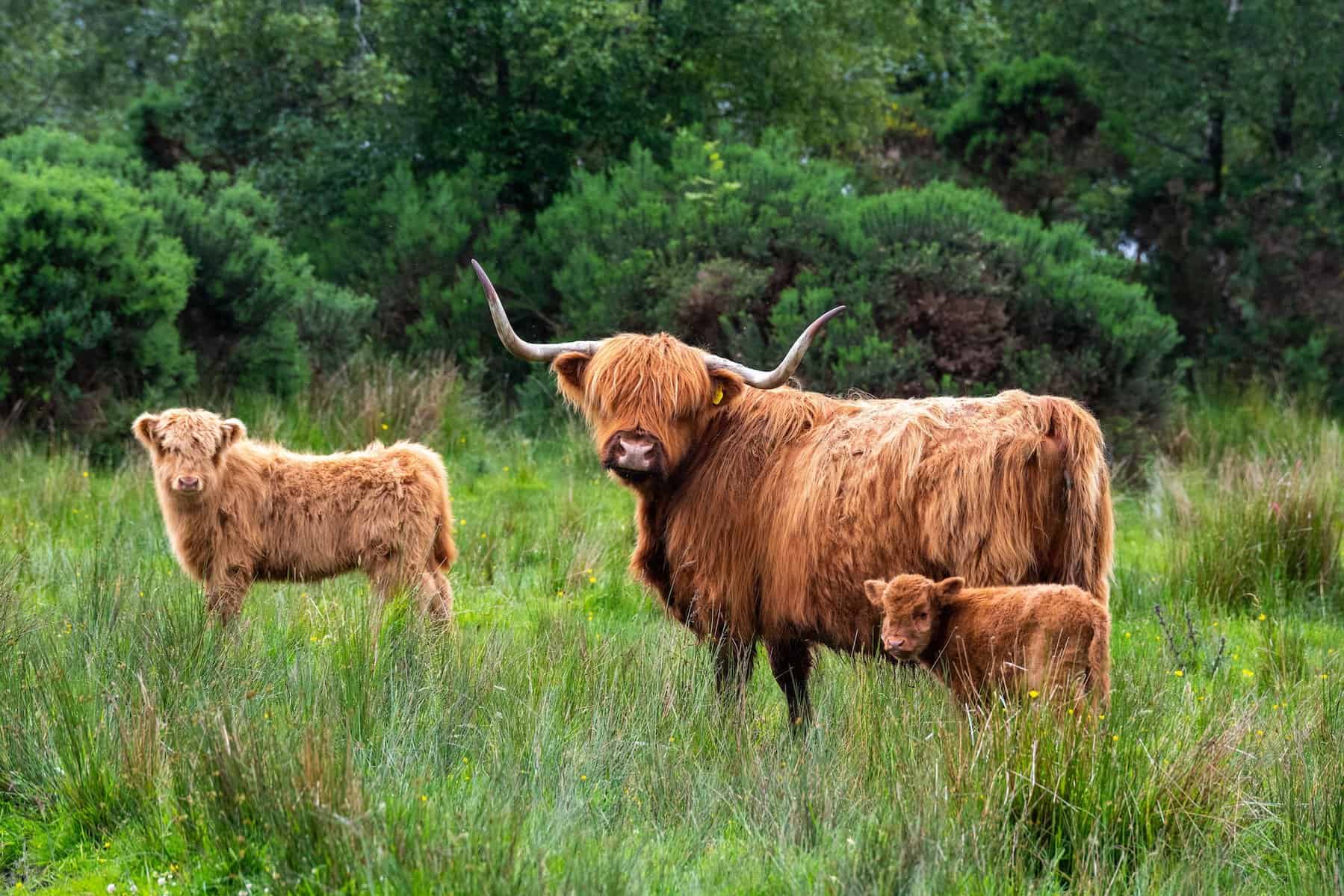
Funny enough, even though Highland cows are incredibly well mannered and friendly, you should never approach a mother when she is next to her calf.
That’s because Highland mothers are incredibly protective of their babies, and as such you should really watch your back if you approach their calf.
While they are nowhere near the largest animals around, they will easily attack anyone that can hurt their baby, so definitely keep your distance.
With that being said, Highland cows make for some fantastic mothers, and they will gladly give their lives to make sure that their babies survive any incoming threat.
An interesting fact about Highland mothers is that they can easily breed way past the age of 18, and they can even raise as many as 15 calves in their lifetime.
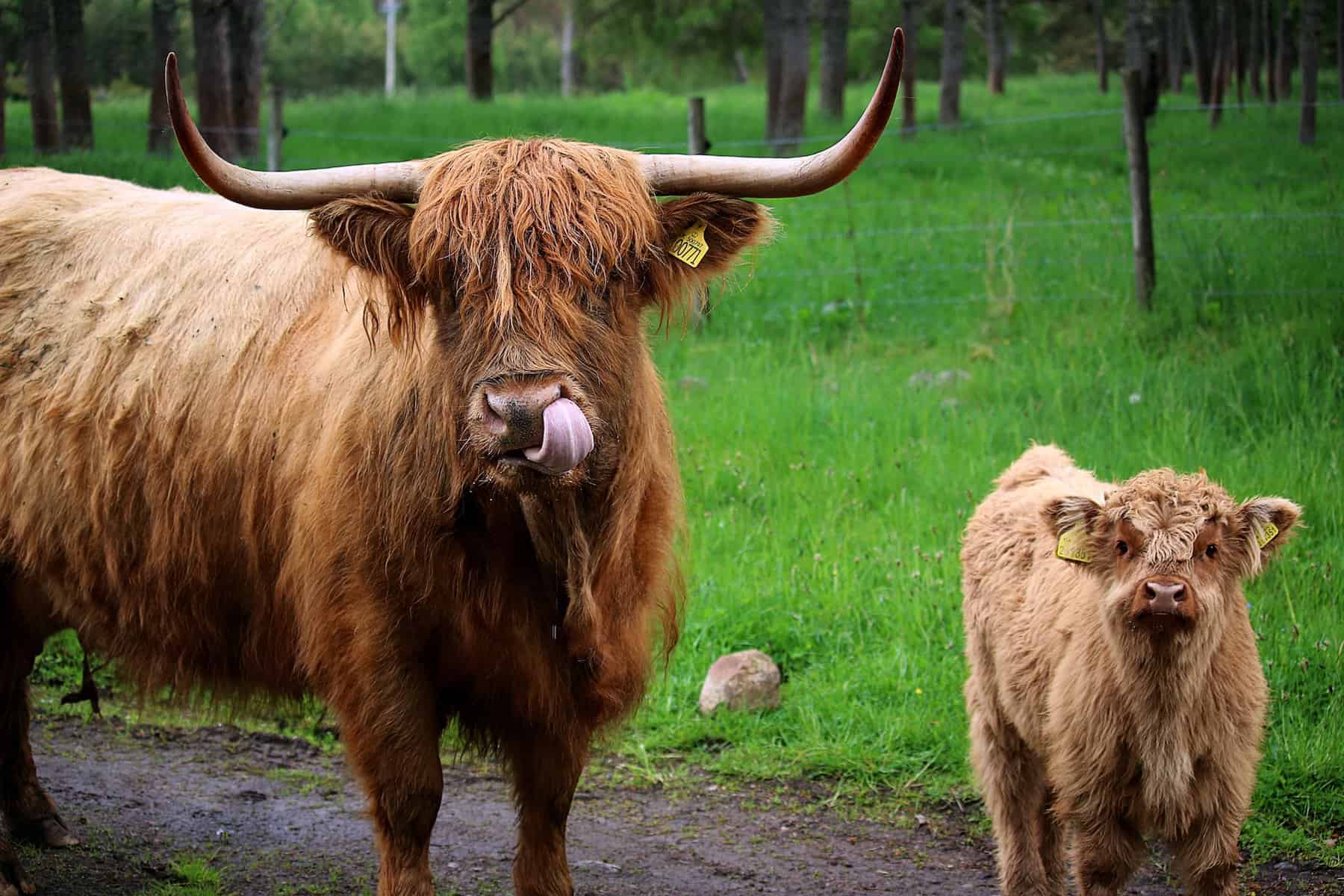
The calves that they do end up giving birth to tend to be on the smaller side of the spectrum, usually weighing in at less than 50 to 75lbs or 22 to 34kg each.
While they may seem small and frail when they’re babies though, Highland calves do tend to grow very quickly so they won’t stay small for long.
The fact that they are so small works out in their favor though as this small frame makes it easier for the mother to give birth without having to go through calving problems such as prolapse and caesarean.
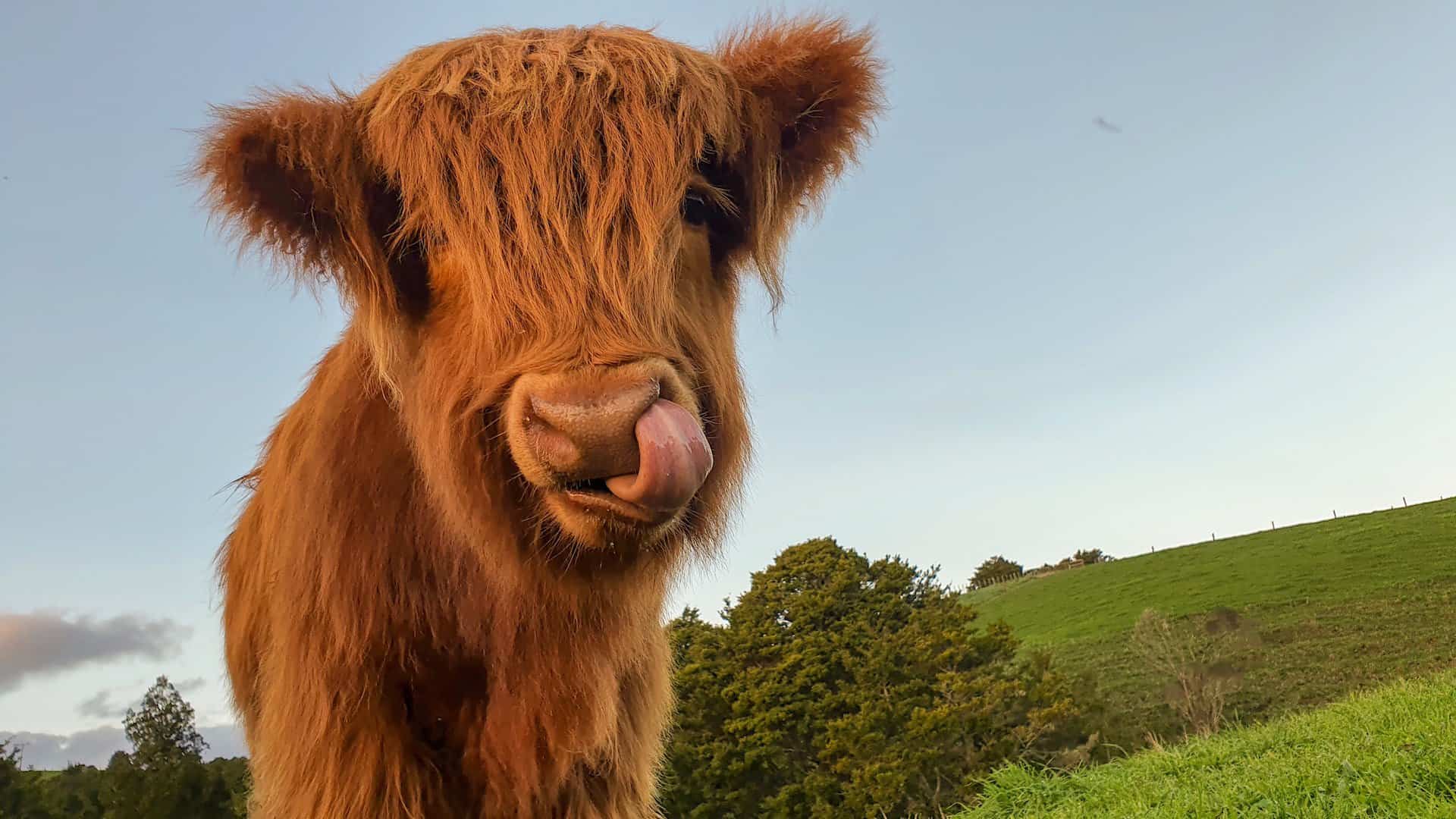
Another interesting fact about Highland cows is that even if it’s not their babies next to them, they will still lay their lives on the line to save them if a predator comes too close to their little ones.
As such, calves have a much higher chance of getting born and surviving until they reach maturity over most any other cow breed out there.
Highland Cattle Behavior and Temperament
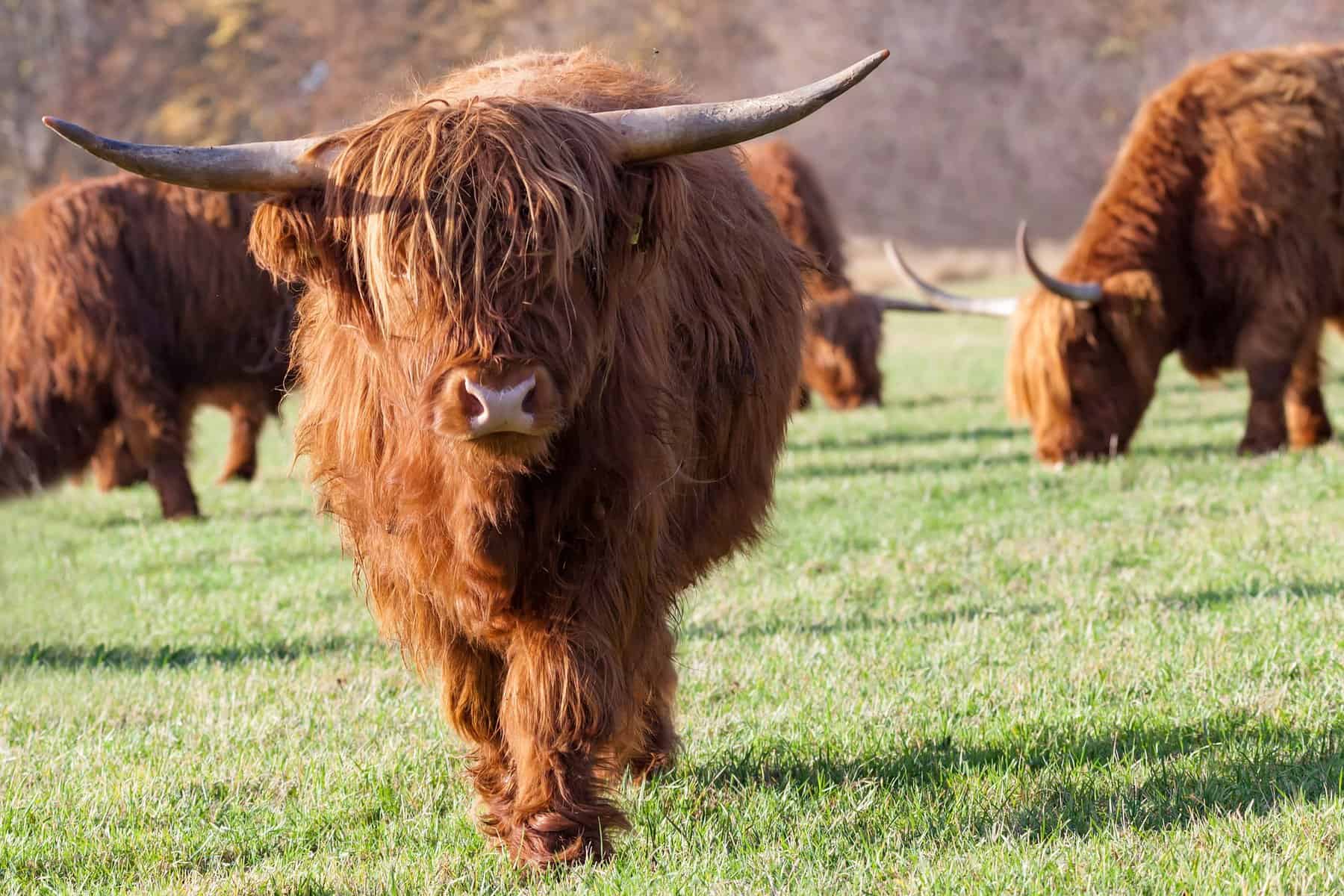
Highland cows are social creatures that thrive in large groups. Interestingly enough, their group’s hierarchy is established quite quickly, with only a single dominant male taking over the reins of the group.
The main components that go into the establishment of the hierarchy are the following:
- Age
- Gender
The Highland cattle are known for displaying a wide range of emotions and temperaments such as fear, stress, anxiety and affability.
They are highly intelligent creatures too, being capable of remembering faces long after they were first introduced to the humans.
Another interesting thing to remember here is that each and every individual cattle has its very own distinct personality.
So, while we can’t really say that every Highland cow has the same personality traits, they are generally very kind and amicable creatures that very rarely stir up problems themselves.
They can easily bond with humans or any other creature that comes their way, and as long as they do not have calves around, they are very non-confrontational.
They are smart enough to identify threats from a distance too and because they travel in herds, they are a lot more likely to survive a predator’s attacks than your average cow.
Differences Between the Kyloe and the Highland Cattle
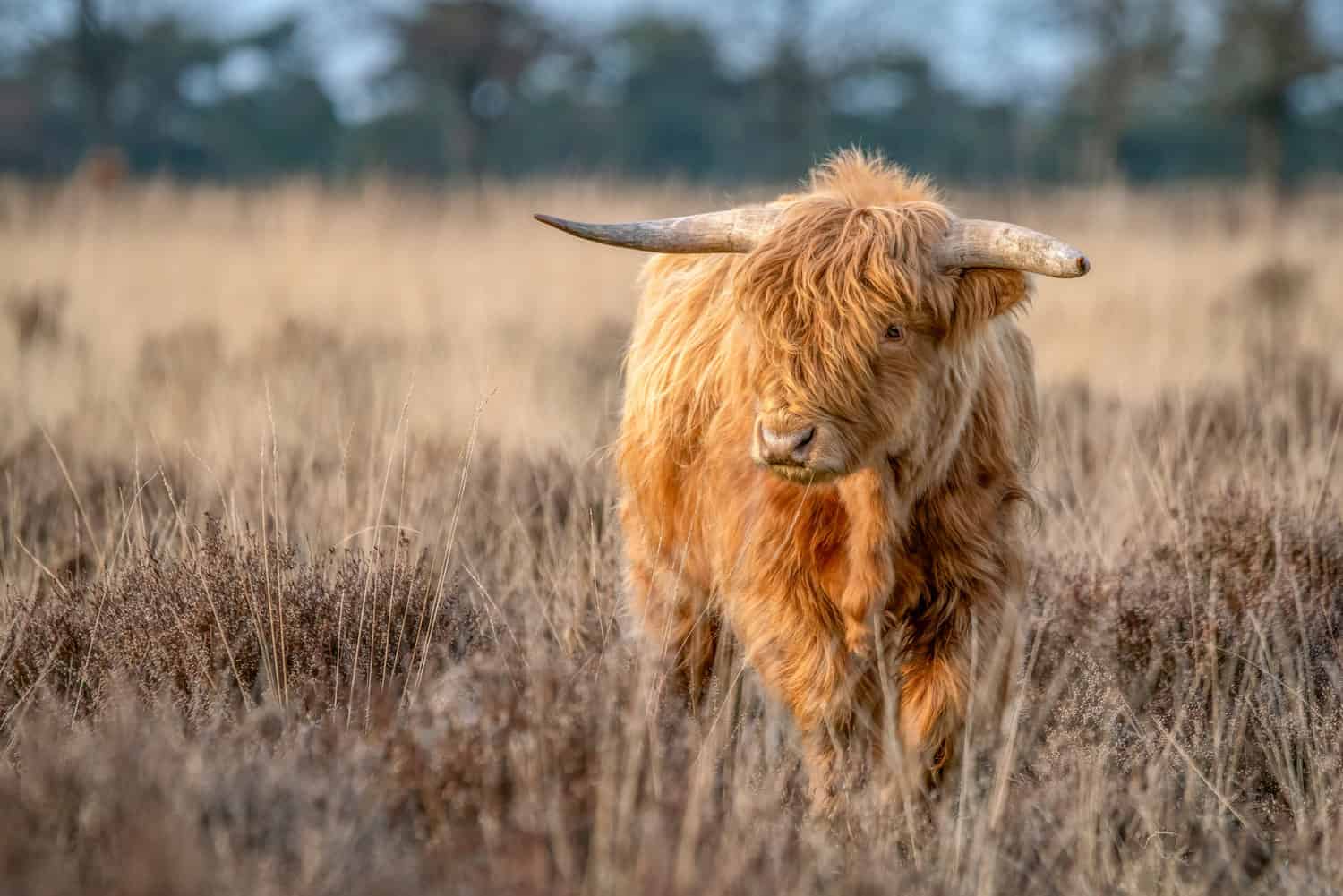
Back in the day, the original Highland cattle was separated into two different classes, specifically:
- The West Highlands or Kyloe
- The Highlander
While the two variants of the same breed were similar in a lot of ways, they also differed a lot from one another. This is how you could tell them apart:
- The average Kyloe cows were much smaller than the Highlanders
- The Kyloes were raised on the western islands of Scotland
- There were a lot more black and brindled Kyloes than black and brindled Highlanders
While they were actively sought-out for different reasons back in the day, the two classes were eventually merged and both of them were referred to as the Highland cow breed.
The Availability of Highland Cattle

It is believed that nowadays there are around 25,000 Highland cattle registered around the world.
While that number may seem very small, keep in mind that that’s only referring to registered cattle. There are plenty more unregistered Highland cows out there for you to buy for yourself.
In total, it is believed that there are as many as a billion Highland cows around the world right now.
Thanks to the breed’s consistent popularity around the world as being one of the top sources of high-quality beef since the late 19th century, the breed is in no danger of dwindling anytime soon.
Conclusion

So, if you want to invest into a fluffy cow, why not go for it today?
There are plenty of advantages and disadvantages that come with making this purchase, but then again, you can say the same about any breed out there.
Regardless, we hope that this article helped you make up your mind and we hope that you now know more about Highland cows than you did when you first clicked on the link.
Frequently Asked Questions (FAQ)

What Are the Cons of Highland Cattle?
There are two many cons that come with owning your very own Highland cow, and they are the following:
- They can’t handle being solitary creatures – They love to hang out and interact with the rest of the herd and humans, if kept in solitude they will become stressed very easily
- Their long coats require a lot more maintenance than other breeds
Are Highland Cows Good Beef?
Highland beef is very high-quality thanks to its following features:
- The beef is slow maturing
- It’s very lean
- The meat is very firm to the touch
- It’s low in fat
- It has a very high percentage of protein and iron
All of this together makes Highland cow beef quite delicious, especially considering the added benefit of the marbling that it has.
Are Highland Cattle Friendly?
To put it bluntly, yes. These cows have fantastic temperament, although they can get quite protective around their calves.
Are Highland Cows Beef or Dairy?
Most of the time, Highland cows are raised for their meat. At the same time though they can also be raised for their milk production.
The Highland cow milk does have a high level of butterfat though, so it is a bit more of an acquired taste.
Are Highland Cows Expensive?
While the cows themselves are not all that expensive, actually grooming them and keeping them healthy and pretty will prove to be quite the investment.
Still, you can expect to pay around $2,000 to $10,000 per cow.
What is the Lifespan of a Highland Cow?
These cows can also generally live up to be around 15 to 22 years old or more, and they can produce milk and calves up until they get to be around 15 years old or more.


